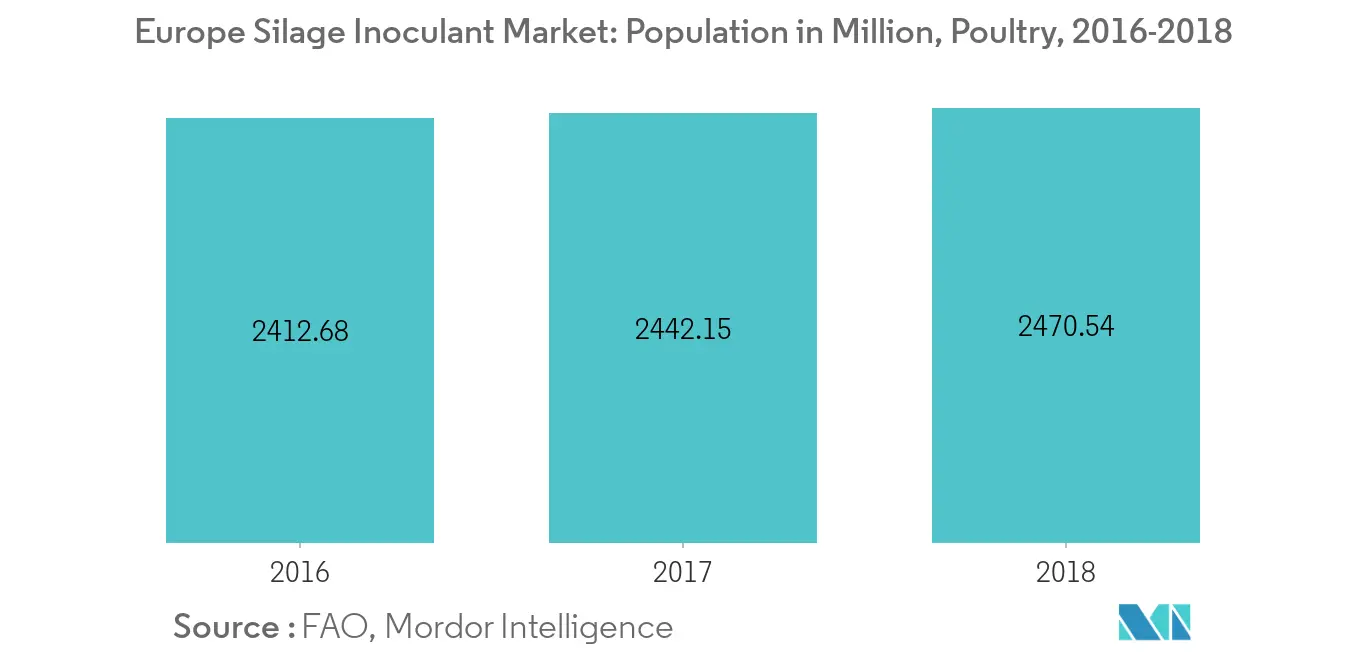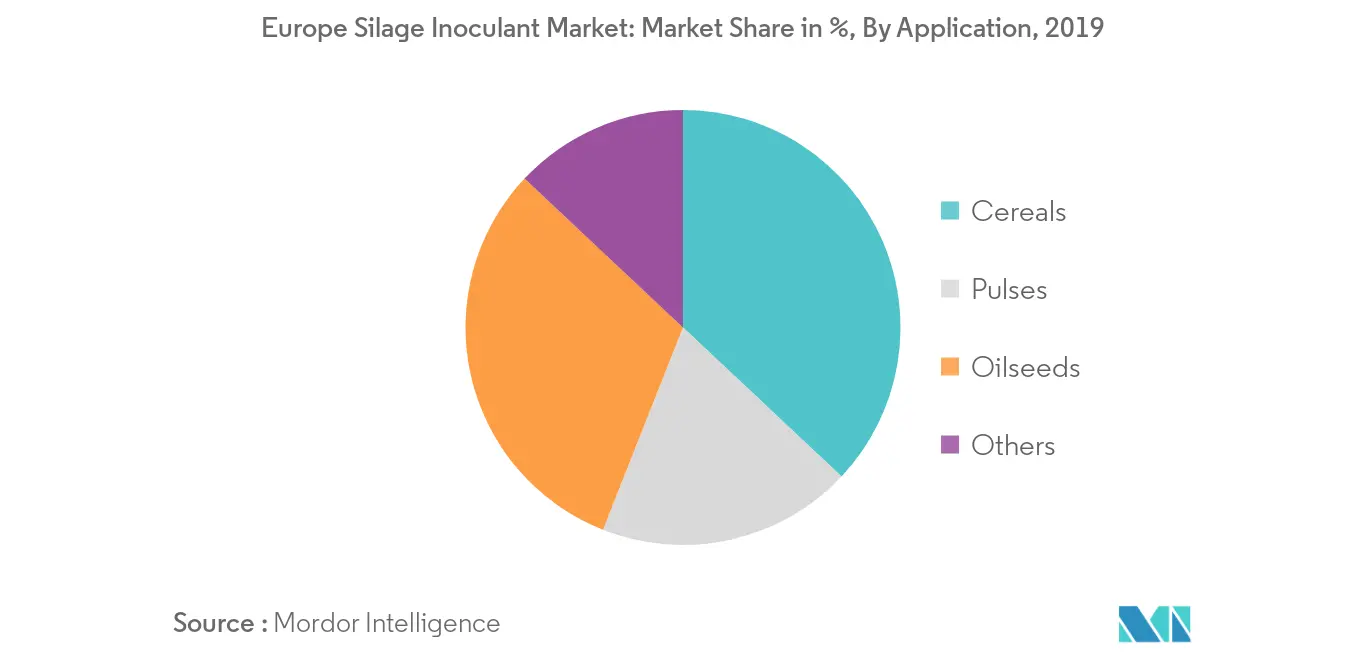Market Trends of Europe Silage Inoculant Industry
This section covers the major market trends shaping the Europe Silage Inoculant Market according to our research experts:
Increase in Live-stock production
According to the FAO statistics, livestock production in European countries is increasing due to the rising demand for meat in terms of consumption as well as exports. With rising mass production of meat, a shift towards landless meat production is also trending in this region. The meat production industry has been consolidating to increase bovine meat production with reduced land usage. According to Food and Agriculture, in 2016 Poultry population was 2412.68 million that increased to 2470.54 million in 2018 and as per Eurostat pig population increased from 147.18 million to 148.16 million during the same period. Feed-lot raised animals are kept indoors and are provided with compound feed for their enhanced growth and are supplied with essential nutrients. This led to increased demand and consumption of feed, thereby, driving the market for silage. Silage inoculants are added to the feedstock in varying quantities, depending on the cattle type as well as the surrounding environment and to preserve the silage for longer durations.

Cereals Segment Dominates the Market
In order to meet the growing livestock demands, farmers feeding livestock populations along with silage inoculants will be the best option as they help in providing natural nutrition to the animals in addition to protecting from spoilage or any mold development. More than half of cereals grown in Europe are wheat. The remaining 50% is composed of maize and barley, each representing about one third. About two-thirds of the total cereals produced are used for feed production. Maize, wheat, barley, and oats are the highest used cereal in the compound feed production on the back of increased demand from the livestock sector. As per the Department for Environment Food and Rural Affairs, in 2017, approximately 4,749 thousand tons of wheat was used in feed production which is 2.5% more wheat that was used to produce animal feed in 2016 and 1191 thousand tons of barley a 17% more than the previous year in united Kingdom. Thus the increasing use of cereals in feed production will drive the market for inoculants during the study period.

